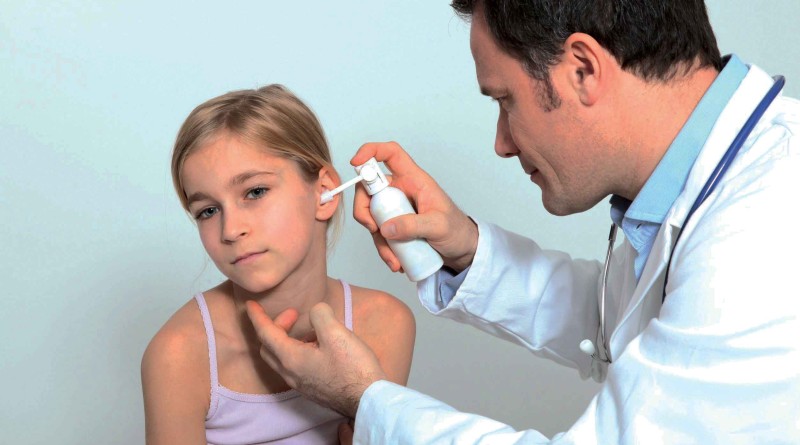Dangerous Discharge
Otitis Media, characterized by a persistent discharge from the middle ear leading to hearing loss, can occur in people of all age groups, but it is most commonly found among children
By Dr Suneela Garg / Deeksha Khurana
Otitis media is an infection of the middle ear that causes inflammation (redness and swelling) and a build-up of fluid behind the eardrum. Chronic suppurative otitis media (CSOM) is the result of an initial episode of acute otitis media (AOM) and is characterized by a persistent discharge from the middle ear through a tympanic perforation. The World Health Organization (WHO) had reported and categorized Otitis Media as one of the neglected tropical diseases. Otitis media can be prevented through improved ear care practices. It can be treated effectively to reduce its impact.
Epidemiology of Otitis Media
Globally up to 330 million persons are affected by CSOM. Prevalence of Otitis Media ranges from 1% in developed countries to 46% among certain populations. Ninety percent of CSOM burden is borne by countries of South-east Asia & Western Pacific regions, Africa and ethnic minorities of Pacific Rim. Up to 60% of those with otitis media have disabling hearing loss. It accounts for nearly 28,000 deaths annually.
Although Otitis Media can occur in people of all age groups, it is most commonly found among children. It is estimated that one in every four children experience at least one middle ear infection by the time they are 10 years old. Studies in developed countries show that by their third birthday 80% of children will have experienced at least one episode of AOM, and 40% will have six or more recurrences by the age of seven years.
Global Health Estimates 2012 reveal that Otitis Media is responsible for 5, 233,441 Disability Adjusted Life Years (DALYs). South-East Asia, Western Pacific and Africa region account for over 70% of the total DALYs due to Otitis Media. The table below summarizes the region wise distribution of DALYs due to Otitis Media.
The Global AOM incidence rate (new episodes per hundred people per year), according to estimates, is 10.85% i.e. 709 million cases each year with 51% of these occurring in children under five years of age. Global incidence rate ranges from 3.64 for Europe Central (40% of cases occurring in children 0–5) to 43.36 and 43.37 for Sub-Saharan Africa West (56% in children under 5 years of age) and Central (58% in children under 5 years of age) respectively. Other areas with incidence lower than 5 are Asia Pacific High Income (3.75), Asia East (3.93), Europe Eastern (3.96) and Latin America Southern (4.25).
Global incidence rate is highest in the age group 1–4 (60.99%) and in the first year of life (45.28%). Incidence lowers to a minimum of 1.49 in the age group 35–44 and rises again to 2.3% after 75 years of age.
Acute Otitis Media incidence rate estimates per hundred people, by the 21 WHO Member States
Global estimated CSOM incidence rate is 4.76 per thousand people for a total of 31 million cases. Latin America is the area with the lowest incidence (1.70 per thousand), followed by Asia Pacific High Income (3.02) and North America High Income (3.06). In the first year of life, Asia Pacific High Income has the lowest incidence rate (1.59 per thousand), while Oceania has the highest (35.96). The proportion of cases occurring in children under 5 years vary from 1.8% in the Asia Pacific High Income, to 38.9% in Oceania and 41.0% in Sub-Saharan Africa Central.
Globally, CSOM incidence rate is highest is the first year of life (15.40 per thousand) and reaches its lowest value after 65 years of age (2.51).
CSOM incidence rate estimates per thousand people, by the 21 WHO member states
In South East Asia Region, prevalence of CSOM ranges from 1.3% in Myanmar to 8.4% in Sri Lanka. Multiple studies have shown high prevalence of otitis media in India with more than 6% experiencing the disorder.
Risk Factors for Otitis Media
Risk factors to Otitis Media include exposure to smoke, use of pacifiers, and attending day-care. It may be related to viral upper respiratory infections, overcrowding of households, use of ear buds, bathing in dirty swimming pools and ponds and seeking care from local practitioners.
Breastfeeding, avoidance of smoking during and after pregnancy, and reduction of exposure to indoor air pollution are the pillars of prevention of AOM. Early diagnosis and treatment based on prompt care-seeking remain crucial particularly in the first years of life, also as a way to prevent hearing loss. In developing countries, there have been attempts to standardize diagnosis and treatment of sick children through the IMCI strategy.
Collaborative efforts from Ministry of Health, International Agencies, Public Health Experts, ENT surgeons, audiologists, special educators and grassroots workers are required to combat this disease.
(The authors are Director Professor & Head- Community Medicine, Maulana Azad Medical College and Programme Officer, Society for Sound Hearing)

